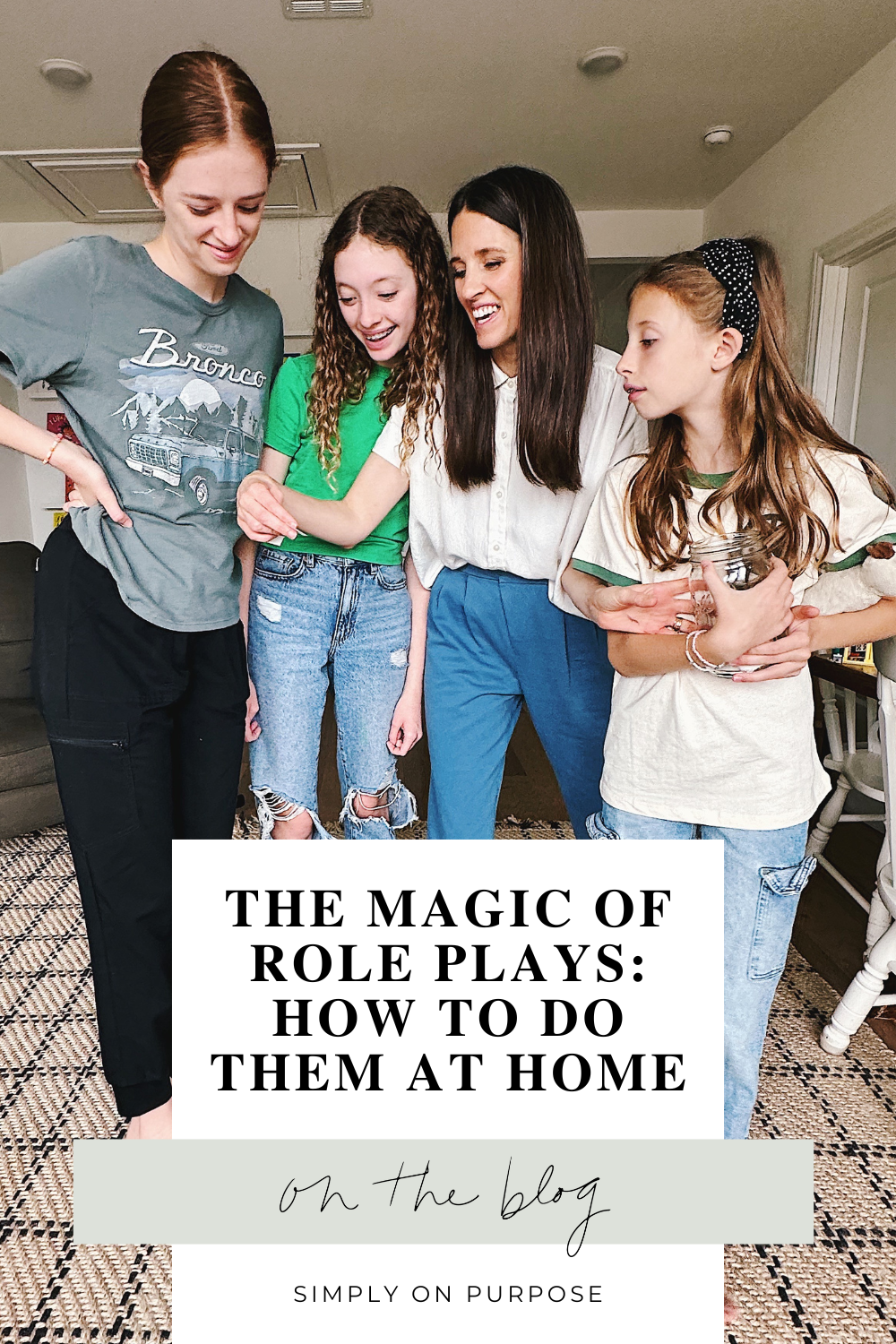One of the most powerful tools to help teach our kids important skills is role-playing. It’s a simple activity that allows kids to practice real-life situations in a fun, low-pressure way. Here’s some research about why role plays are so effective and how you can start using them at home.
Why Role Plays Work
Role plays help children build confidence and develop their social and communication skills. When kids act out different scenarios, they get a chance to practice how they might respond in real life. This hands-on practice makes it easier for them to handle similar situations when they happen for real. Role-playing also helps children see things from another person’s point of view, which is key to developing empathy.
Additionally, role plays are a form of imaginative play! Dr. Karyn Purvis, an internationally renowned child development expert said, “What we know from research is that it takes 400 repetitions of an act or a learning skill… to get one new synapse… OR, 12 repetitions with joy and laughter and you get a synapse because there’s a release of a chemical dopamine.” That joy and laughter is play! And this astounding number is motivation enough to teach and learn through play.
Here are some of the other main benefits of role plays:
- They build confidence: Acting out situations gives your child a chance to “rehearse” before the real thing. Whether they’re nervous about talking to a new friend, working through a conflict, or asking a teacher for help, practicing beforehand helps them feel more prepared.
- They teach problem-solving: Through role play, your child learns to think through different ways to handle a situation. They can try out different approaches and see what works best for them, which also helps them feel more in control.
- They help children develop empathy: When kids take on different roles, like playing the part of a friend or sibling, they begin to understand how others might feel. This helps them become more thoughtful and understanding in their relationships.
How to Do Role Plays at Home
You don’t need any special tools or a big setup to do role plays at home. It’s really about creating a safe space for your child to explore different situations. Here’s a simple list to get started (get a 1-page cheat sheet HERE if you want to remember these steps!):
- Wait for a positive moment when the child is ready to learn. Don’t try to have these teaching moments until they are in a good place mentally.
- Say (or do) something positive to keep their thinking brain online. For example, “It’s so fun to hang out with you!” or simply touch your child in a safe way.
- Pick a situation to practice. Choose something your child might be facing or could face in the future. It could be something they are dealing with right now, or something they anticipate happening in the future. It can be helpful to ask your child if there’s something they feel nervous or unsure about, and use that as a starting point.
- Assign roles. In role plays, one person acts as themselves, and the other plays the part of someone else—like a friend, teacher, or sibling. You and your child can take turns playing different roles. For example, if your child is practicing how to talk to a new friend, you can pretend to be the new classmate, and they can practice introducing themselves.
- Act it out! Once you’ve assigned roles, act out the situation. Keep the tone light and fun—this isn’t about getting it perfect, but about practicing in a comfortable setting.
- Talk about it, giving positive feedback. Talk about how the role play went. Ash your child how they felt and if they would change anything. Most importantly, point out what they did well, and how that will help them be prepared in the future.
Why Role Plays are Like Magic
The magic of role plays is that they turn everyday challenges into practice opportunities, giving kids the chance to build confidence and improve their social skills in a fun, playful way. Whether your child is shy, dealing with a difficult situation, or just looking to strengthen their communication, role-playing at home can help them feel more prepared and capable. Best of all, it’s a simple, enjoyable activity you can do together!
If you’d like more resources on teaching your child through play, check out these resources!

